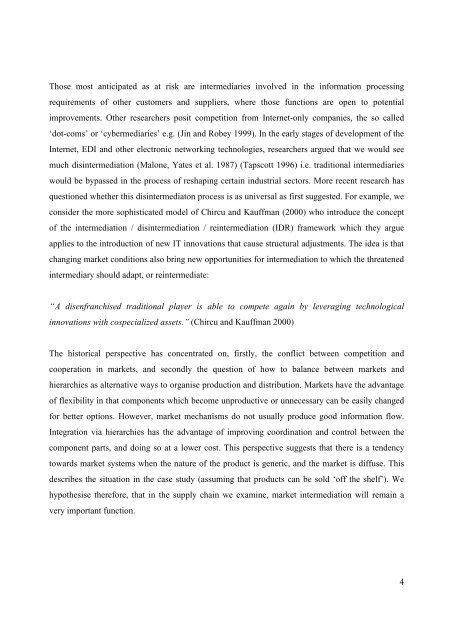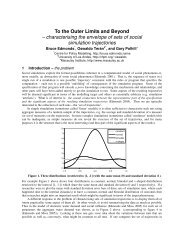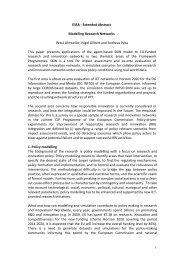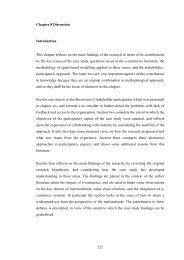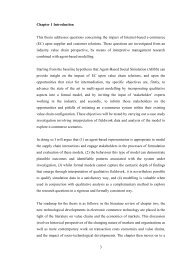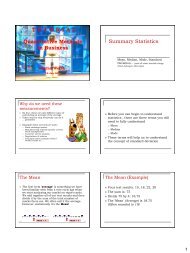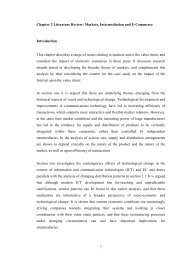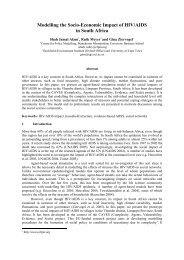1 Agent-Based Modelling Incorporating Qualitative and Quantitative ...
1 Agent-Based Modelling Incorporating Qualitative and Quantitative ...
1 Agent-Based Modelling Incorporating Qualitative and Quantitative ...
You also want an ePaper? Increase the reach of your titles
YUMPU automatically turns print PDFs into web optimized ePapers that Google loves.
Those most anticipated as at risk are intermediaries involved in the information processing<br />
requirements of other customers <strong>and</strong> suppliers, where those functions are open to potential<br />
improvements. Other researchers posit competition from Internet-only companies, the so called<br />
‘dot-coms’ or ‘cybermediaries’ e.g. (Jin <strong>and</strong> Robey 1999). In the early stages of development of the<br />
Internet, EDI <strong>and</strong> other electronic networking technologies, researchers argued that we would see<br />
much disintermediation (Malone, Yates et al. 1987) (Tapscott 1996) i.e. traditional intermediaries<br />
would be bypassed in the process of reshaping certain industrial sectors. More recent research has<br />
questioned whether this disintermediaton process is as universal as first suggested. For example, we<br />
consider the more sophisticated model of Chircu <strong>and</strong> Kauffman (2000) who introduce the concept<br />
of the intermediation / disintermediation / reintermediation (IDR) framework which they argue<br />
applies to the introduction of new IT innovations that cause structural adjustments. The idea is that<br />
changing market conditions also bring new opportunities for intermediation to which the threatened<br />
intermediary should adapt, or reintermediate:<br />
“A disenfranchised traditional player is able to compete again by leveraging technological<br />
innovations with cospecialized assets.” (Chircu <strong>and</strong> Kauffman 2000)<br />
The historical perspective has concentrated on, firstly, the conflict between competition <strong>and</strong><br />
cooperation in markets, <strong>and</strong> secondly the question of how to balance between markets <strong>and</strong><br />
hierarchies as alternative ways to organise production <strong>and</strong> distribution. Markets have the advantage<br />
of flexibility in that components which become unproductive or unnecessary can be easily changed<br />
for better options. However, market mechanisms do not usually produce good information flow.<br />
Integration via hierarchies has the advantage of improving coordination <strong>and</strong> control between the<br />
component parts, <strong>and</strong> doing so at a lower cost. This perspective suggests that there is a tendency<br />
towards market systems when the nature of the product is generic, <strong>and</strong> the market is diffuse. This<br />
describes the situation in the case study (assuming that products can be sold ‘off the shelf’). We<br />
hypothesise therefore, that in the supply chain we examine, market intermediation will remain a<br />
very important function.<br />
4


